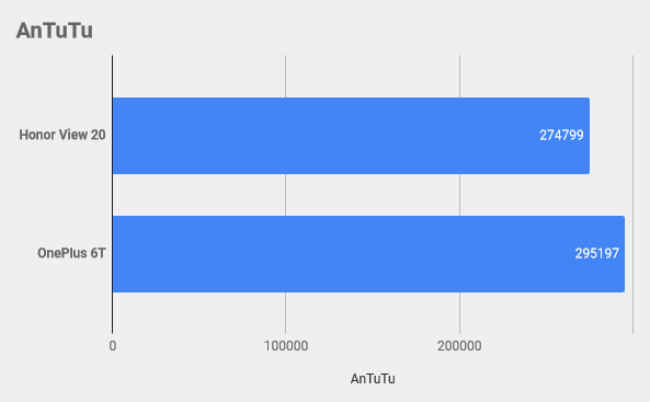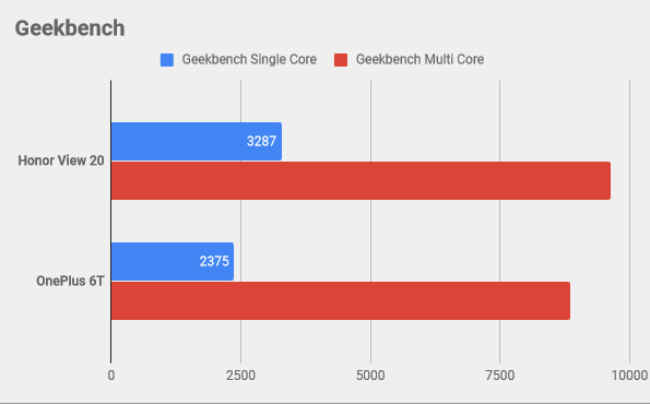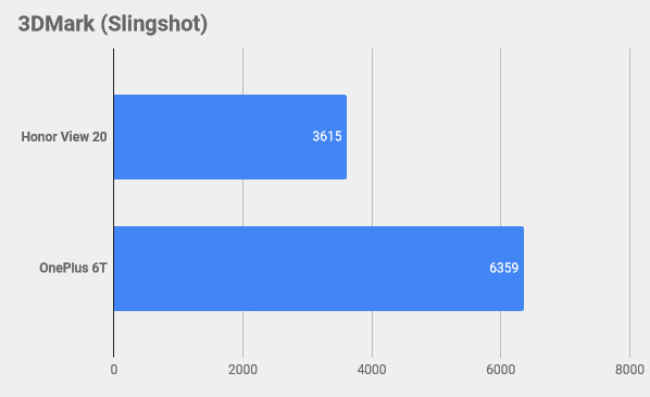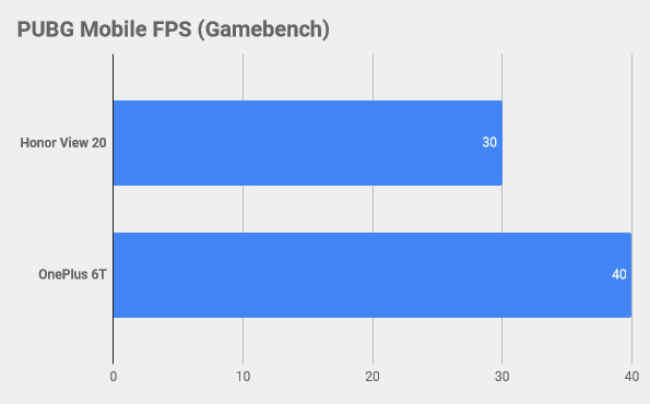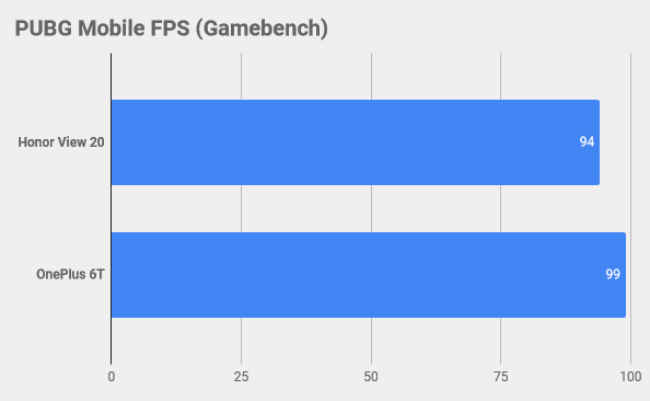Honor View 20 vs OnePlus 6T: Performance showdown
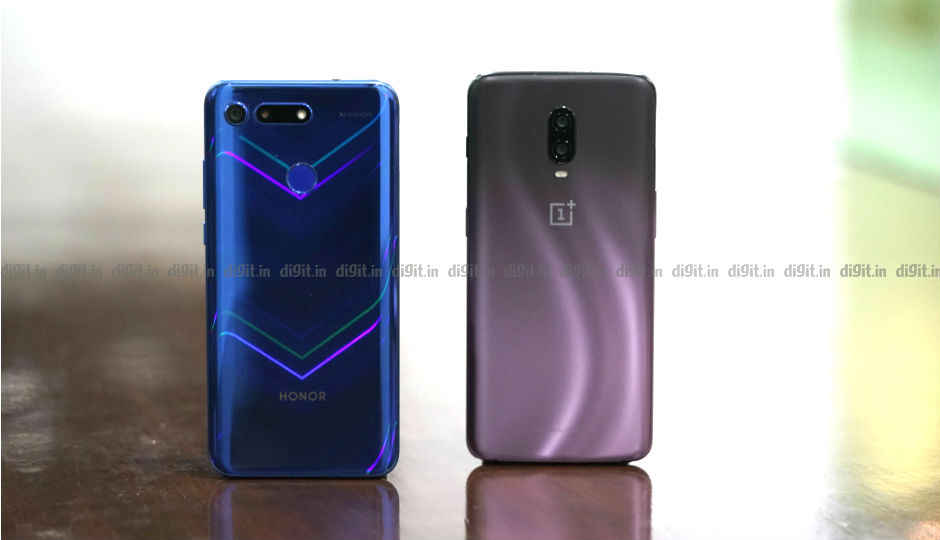
How does 2019's best phone so far fare against one of 2018's best-selling smartphones?
The entry of the Honor View 20, especially at the aggressive and attractive price of Rs 37,999, may just result in Honor’s latest high-end flagship becoming the answer to OnePlus’ dominance. For quite some time now, OnePlus has been enjoying the comfort of being the number one in the premium segment, and more recently, the OnePlus 6 and the OnePlus 6T even dethroned Apple’s iPhones in the high-end and premium segment. While it’s clear that a high-end phone priced between Rs 25,000 to Rs 40,000 is a perfectly good option to go for, as opposed to selling a kidney and buying a premium flagship, the competition to OnePlus will be from phones priced in the same range, if not lower. As a result, the Honor View 20 becomes the perfect alternative to go for, but is there any trade-off that you should be wary about? We have the answer.
What’s inside?
While the OnePlus 6T was the flagbearer of Qualcomm’s flagship chipset last year, the Honor View 20 relies on Huawei’s Kirin 980 SoC, which the company claims is more advanced than last year’s flagship chipsets. Huawei designed the Kirin 980 on a 7nm manufacturing process while the Snapdragon 845 on the OnePlus 6T is made on a 10nm process. That’s not the only difference though. While both SoCs come with eight cores, the arrangement of the cores on the Kirin 980 is different. Huawei’s flagship has two Cortex A76 cores clocked at 2.6GHz and two more at 1.92GHz, along with four Cortex A55 cores clocked at 1.8GHz. The first Cortex A76 cores are only used for short bursts when the load is high, while the other two high-performance cores are used for most other intensive tasks. Huawei believes, that way the chipset functions more efficiently.
On the other hand, the OnePlus 6T’s Snapdragon 845 has proved to be a no-nonsense performer. It has four Kryo 385 cores clocked at 2.8GHz for high-performance along with four 385 Silver cores clocked at 1.7GHz for efficiency. As we have noted in our review and multiple other comparisons and features, the OnePlus 6T is fast, if not the fastest. The company has optimised the software on the OnePlus 6T in such a way that tasks seems to complete much faster than other phones. The UI animations are speeded up, the bootup time is less than 15 seconds, and apps launch within fraction of a second. It’s also quite adept at switching between apps quick enough, and playing games, as we had found out to our surprise, is a delightful experience.
However, the Honor View 20 is no slouch. The Kirin 980 is equally adept at handling just about any situation. Even though the EMUI 9 on the View 20 is made to maximise the features on the phone, it’s quite fast as well. I’m not a fan of its aesthetics though, but if you have used a Honor or a Huawei phone before, you will right at home. More importantly, everything advertised on the phone seems to work pretty well, be it the gesture navigation, face unlock and more. It’s also quite responsive in launching and switching apps. We noted that resource heavy apps like Powerpoint and Chrome (with 18 tabs) switched with minimal delay, as is loading RAW files into Lightroom from the phone’s storage.
In that regard, both the OnePlus 6T and the Honor View 20 are using top-notch hardware. Both phones come with 6GB or 8GB of LPDDR4X RAM and up to 256GB of UFS 2.1 storage. The OnePlus 6T has a special McLaren Edition that comes with 10GB of RAM as well, but you really aren’t going to get anything extra out of it.
Benchmark analysis
Synthetic benchmarks, however, favour the OnePlus 6T more over the Honor View 20. Even with a next-gen processor, the Honor View 20’s AnTuTu score of 274799 was a hair lower than the OnePlus 6T’s 295197. Yet, on Geekbench, the Kirin 980 on Honor View 20 edges past the Snapdragon 845 on the OnePlus 6T by a few points. The View 20 scored 3287 and 9626 on single-core and multi-core tests respectively. The OnePlus 6T scored a little lower at 2375 and 8856 points for the same tests. There isn’t a big difference in the benchmark scores, which indicates that the Kirin 980 has now caught up with Qualcomm’s last-generation chipset. The real battle will be between the new Snapdragon 855 and the Kirin 980.
The benchmark numbers doesn’t really give the full picture, but it does show that most everyday tasks will perform equally well on both the phones. Where the Honor View 20 falters is in graphics rendering. The Mali-G76 GPU on the Honor View 20 is quite old, as compared to the Adreno 630 on the OnePlus 6T, and that shows in the GPU benchmarks.
On 3DMark Slingshot, the Honor View 20 scored a measly 3615 while the OnePlus 6T posted almost double that number at 6359. Even in certain high-level tests on GFX Bench, the number of frames rendered are higher on the OnePlus 6T than the Honor View 20. For instance, the OnePlus 6T rendered 2138 frames in Aztec Ruins High-Level test on GFX Bench as compared to 1928 on the Honor View 20. Even in other high-level tests, the OnePlus 6T outperforms the View 20 by a significant margin.
PUBG Mobile test
To put the diagnosis by the synthetic benchmarks into perspective, we played PUBG Mobile, the popualar battle-royale game taking the world by storm. The game is believed to be quite GPU intensive and as such, only high-end and flagship phones manage to deliver 40 FPS even on high graphics settings. The OnePlus 6T, as measured by GameBench, does deliver 40 FPS with a smooth 99 percent frame rate stability. The Honor View 20, in comparison, maxed out at 30 FPS with 94 percent stability.
Interestingly, Honor relies on Huawei’s proprietary GPU Turbo 2.0 tech to maximise the GPU output. GPU Turbo uses techniques that render only those frames that have changed while playing the game, reducing the load on the GPU, and improving the playability. Despite that, the Adreno 630 on the OnePlus 6T edges way past the phone. In fact, it is my go-to phone to play the game in my free time.
Huawei’s GPU Turbo 2.0 also has another adverse effect on gaming. It lowers the quality of graphics even when the settings are maxed out. For instance, the quality of the grass and the shadows appear much richer on the OnePlus 6T.
Battery life
Fast performance is of little use, if the battery life is not at par. In that case, the Honor View 20 lasts much longer than the OnePlus 6T. The View 20 gave a screen-on time of 540 minutes while the OnePlus 6T shut down after 356 minutes. The battery capacities on the two phones are also different. The OnePlus 6T comes with a 3700mAh battery while the View 20 offers a 4000mAh battery. Furthermore, both phones charge in more or less the same time. OnePlus 6T relies on the company’s Dash Charge which fills up the battery in around an hour and a half, while the Honor View 20 comes with Huawei’s 22.5W SuperCharge that also takes around the same time to top up.
In conclusion
The OnePlus 6T’s dominance is likely to go on for some time more. The next-gen chipset on the Honor View 20 takes it dangerously close to beating the top-class performance of the OnePlus 6T, but stops short at the graphical prowess. Save for gaming and graphics rendering, both phones are more or less at par. The price of both phones are also similar. Both phone start from Rs 37,999. As far as pure performance is concerned however, the numbers don’t lie and the OnePlus 6T remains the champion of the high-end segment. But if you consider everything that the phones offer, the Honor View 20 certainly seems to be much more interesting and impressive, what with an expansive display (interrupted by a punch-hole screen), and a 48MP rear camera. You can read the review of both the phones to know more about them in detail.
Also Read:

